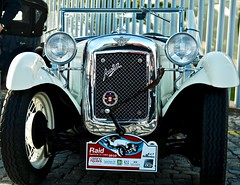Replacing Your Auto Glass
Category : 4 Wd

- Find Out More About:
- Bull Bars For Sale Victoria
byAlma Abell
Colorado Springs, CO is no stranger to drivers with fun cars. In fact there are so many drivers that enjoy the road that there is a huge market for auto glass. Colorado Springs, CO, mechanics have shops with portfolios of custom glass and temper fiber shades for windshields and side windows for cars. Most people are not strangers to the possibilities of custom shades for their cars. Most states in the United States of America have set guidelines on how tinted the windows can be. These laws allow officers to feel more comfortable approaching a car after pulling it over. If a resident has a window that is too tinted then they might have to find more suitable windows for replacing.
Replacing the windows of a car
When it comes to auto glass, Colorado Springs, CO drivers know there are many reasons to replace a window. Sometimes it is important to replace a cloudy window or a scratched window, not just because it is hard to see through, but also for a cosmetic upgrade to the car. Drivers need to feel they are driving in a nice, functional and fun to drive car. They look for many ways to upgrade their car like seat lining, manual sticks, rims, and more. Although finding new windows is more expensive and harder to do, there is still a huge need for auto glass. Colorado Springs, CO drivers need a clear and reliable window to look in that will also keep in the heat and cool air in the car.
Finding a mechanic
The toughest thing in replacing a window is finding an expert in the area for auto glass. Colorado Springs, CO has many mechanics, oil changing places, and wheel repairs and replacement shops. There aren’t that many people that know about auto glass. Colorado Springs, CO drivers understand the huge market that is there however they lack the people that can truly offer the service.
Finding help with replacing or repairing windows is the only difficult part of auto glass. Colorado Springs, CO drivers must look on the Internet for clues to some of these experts in glass and detailing. When one of these people are found, it is even harder to find an affordable one.
Finding an affordable glass repair professional
To find someone that is an expert in auto glass, Colorado Springs, CO drivers need to understand the Internet. Looking online and calling people about their services is the only real way. Driving from place to place is something that is not done anymore because it is way too time consuming. Today it would only take about 3 min vs. the 3 to 4 hours it would take to drive from one place to another. Online people can read reviews, find out about services, and even speak to mechanics online or on the phone.
The Internet allows many people to find ways to get more information about auto glass. Colorado Springs, CO drivers use these tools to make sure they get the best help they can get.
For more information about auto glass Colorado springs CO companies offer.
